First Blogging Tasks: Simple Steps to Set Up a Blog That Works
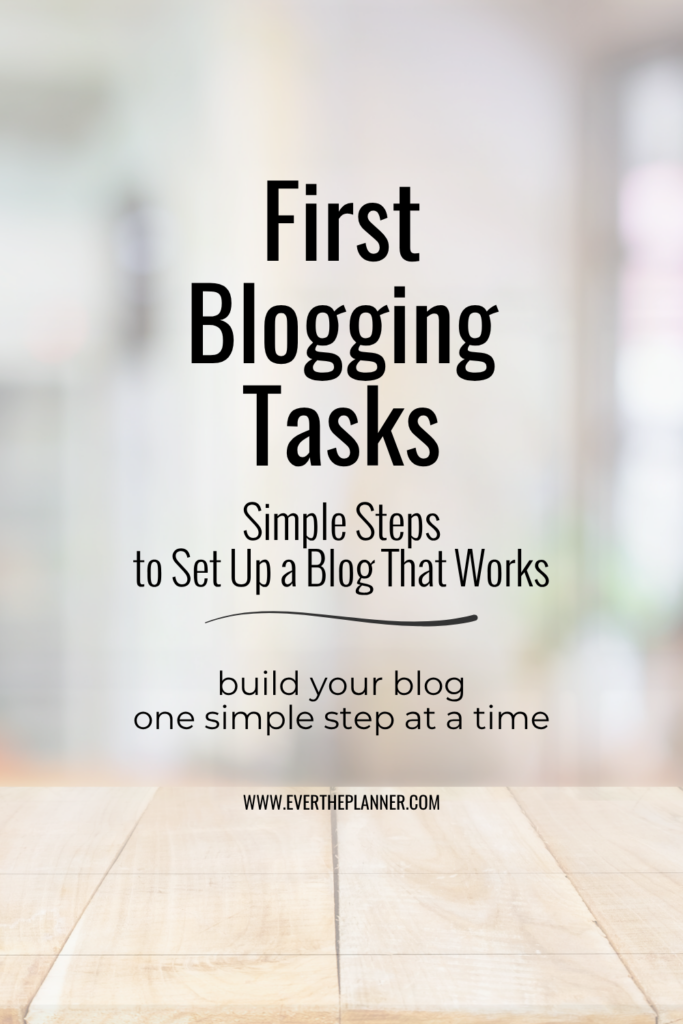
If you’ve been dreaming about starting a blog that can actually earn income—but the tech, the strategy, and the never-ending to-do list make you want to hide under a blanket—it’s easy to feel stuck. The truth is, most people freeze at the very beginning, unsure of what the first blogging tasks should even be.
This guide is here to cut through the jargon and walk you through the simple, actionable steps of how to start a blog that makes money.
We’ll focus on the first blogging tasks that actually move the needle—so you can launch faster, grow smarter, and skip the burnout spiral.
Whether your goal is to build a full-time business or create a steady side income, you don’t need perfection—you just need a clear place to begin.
Let’s do this together.
TL;DR
Starting a blog that makes money doesn’t have to feel overwhelming. This guide walks you through the first blogging tasks that actually matter—from choosing a niche and setting up your site to writing your first posts and getting your legal pages in place. You’ll skip the fluff and focus only on the first blogging tasks that build real momentum—so you can launch with confidence and start growing your income from day one.
This post may contain affiliate links, which means I may earn a small commission if you choose to make a purchase—at no extra cost to you. I only share products I truly believe in and think will help you grow your blog with confidence.
What Are the First Blogging Tasks That Actually Matter?
Before you choose a blog name or write a single word, you need to get clear on two things: who you’re helping and what you’re helping them with.
This is the foundation that makes the rest of your first blogging tasks easier—and more effective.
Your blog doesn’t have to cover everything.
In fact, it really shouldn’t.
The fastest path to traction is creating helpful content for a specific kind of person with a specific kind of problem.
Start here:
- Who do you want to help?
(Think: overwhelmed moms starting online businesses, burned-out 9–5ers craving flexibility, multi-passionate creators juggling side hustles.) - What are they stuck on right now?
(What keeps them up at night? What are they Googling at 2 a.m.?) - What posts will actually help them move forward?
(Give them quick wins, clarity, or a deep breath of “finally someone gets it.”)
If you’re not totally sure yet—that’s okay.
You don’t need to have it all figured out.
Just start with one topic or person you understand well, and speak to them with honesty and heart.
You’ll understand your audience better over time.
And remember that you don’t need to be the expert. You just need to be a helpful voice a few steps ahead.
👉 Need help figuring out exactly who your blog is for? Check out my post: How to Define Your Audience When You’re Just Starting Out—it’ll walk you through it step-by-step with real examples and a super simple approach.
Choose a Platform and Set Up Your Site
This is where a lot of beginners get stuck—but I promise, it doesn’t have to be complicated.
Here’s exactly what to do, in the right order:
1. Get a domain name (your blog’s web address).
You can buy this through Namecheap or directly from your hosting provider when you sign up. Choose something flexible, memorable, and easy to spell.
2. Sign up for blog hosting.
This is what makes your blog live on the internet.
I recommend SiteGround or ShowIt for fast speed, great support, and easy setup.
When you choose your hosting plan, they’ll walk you through installing WordPress.org—which is the version of WordPress you need if you want to make money and have full control.
3. Choose a theme (your blog’s design).
Keep it clean and easy to read. Start with a free theme, or, if you’re a visual builder and don’t mind a learning curve, try Showit to build your beautiful site from scratch.
4. Publish a simple placeholder homepage.
Don’t overthink it—just get something live. A photo, a short intro, and a “coming soon” is totally fine.
5. Skip the extra fluff (for now).
You don’t need a perfect design, logo, or brand palette right away. Focus on getting your foundation live and functional. The polish can come later.
📌 You’ll also need legal pages before launching—don’t worry, we’ll cover that at the end with quick resources you can grab and customize.
Write Your First Blog Posts (Yes, Before You Launch)
Here’s a secret that will save you so much stress: you don’t need a fully designed blog to start writing.
In fact, drafting a few posts before you launch will give you clarity, confidence, and momentum.
Your first blog posts should do one thing: help your ideal reader solve a real problem.
That’s it.
You’re not writing for search engines (yet), or for perfection. You’re writing to connect.
Aim for 3–5 posts before launching.
These posts give visitors something to explore when they land on your site—and give you time to work out your content plan and routine.
Here’s what to focus on:
- Answer real questions. Think about what your audience is Googling late at night. Your post should be friendly, clear, and to-the-point.
- Pick simple topics. Don’t try to “go viral.” Just be helpful. Think:
- “How to Make Time to Blog When You Work Full-Time”
- “5 Blog Post Ideas for When You Have Zero Inspiration”
- “What I Wish I Knew Before Starting My Blog”
- Use a simple structure:
- Clear title
- Short intro that names the problem
- A few helpful steps, tips, or bullet points
- A warm wrap-up that invites connection or action
You’re not behind if you’re not “SEO-optimized” yet.
You’re learning by doing.
Create a Simple Home Page & About Page
You don’t need a fancy homepage or a deeply personal bio to launch your blog—but you do need a couple of simple pages that make people feel welcome and help them know what you’re all about.
Think of these as trust-builders.
When someone lands on your site, they’re silently asking: “Am I in the right place? Can I trust this person? What’s here for me?”
Let’s make sure they find their answers quickly and easily.
Home Page (Start Simple)
Keep this super light. Just answer these 3 questions:
- Who is this blog for?
- What kind of help or content can they expect?
- What should they do next?
You can do this in just a few short paragraphs and a clean layout. Add a button or link to your lead magnet (if you’ve created one) or your most helpful post. That’s enough for now.
About Page (Make It Personal but Useful)
Don’t overthink this. Your About Page is not your life story—it’s a warm introduction and a chance to build a connection with your readers.
Here’s an easy structure to follow:
- A friendly “Hey, I’m [Name]” intro
- A line about who your blog helps and why you started it
- A quick overview of what readers will find here
- A soft invitation to stick around (point them to a great post, lead magnet, or email list)
Bonus tip: Add a photo of yourself if you feel comfortable—it builds trust fast.
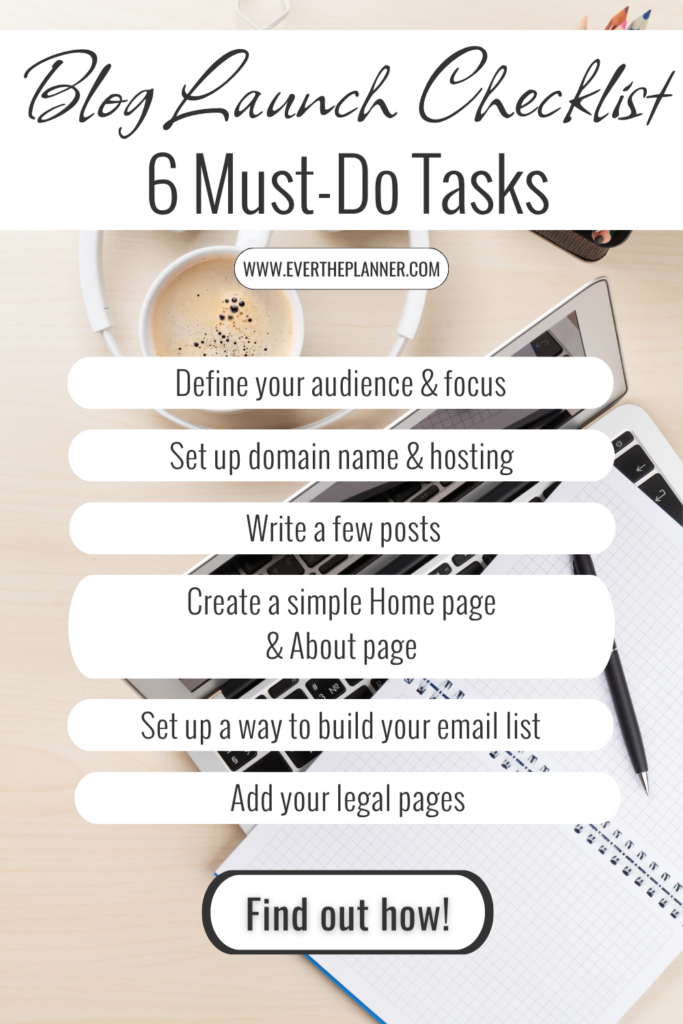
Start Collecting Emails from Day One
Even if you’re not ready to “do email marketing,” you are ready to build a simple list of people who want to hear from you again.
That’s what an email list is: a direct connection to your most interested readers.
Think of your blog as a welcome mat—and your email list as an open door.
Why It Matters
- Social media algorithms change. Email doesn’t.
- Most people won’t come back to your blog unless you remind them.
- You own your list—it’s not controlled by a third-party platform.
Whether you want to sell a product, offer services, or grow your traffic, email gives you a consistent, reliable way to nurture your audience.
How to Set It Up (Fast)
- Sign up for an email service
I recommend Kit (formerly ConvertKit)—it’s beginner-friendly and designed for creators like you. - Create a simple form
Just a headline, a few words about what they’ll get, and a first name and email field. - Embed the form in your blog
Add it to your home page, about page, and the end of every post.
You don’t need a lead magnet to start—but if you have one, this is where you’ll link it up.
Make It Feel Personal
Even a one-line welcome email like “I’m so glad you’re here—more good stuff is on the way!” can build connection with your audience.
What matters most is that you start collecting your readers from the very start so that they’re ready when you decide it’s time to start connecting via email.
Bonus: The Legal Pages Every Blogger Needs (Yes, Even on Day One)
This is the step most beginners skip—but it’s so important. Adding a few basic legal pages to your blog protects both you and your readers—and it helps you look professional from the start.
You don’t need a huge budget, but you do need to make sure your site is covered.
The 3 Pages You Need
- Privacy Policy
Explains how you collect, use, and store personal information (like email addresses). Required by law in many countries, especially if you use things like Google Analytics, email signups, or affiliate links. - Terms and Conditions
Outlines how people can use your site and protects you from legal issues if someone misuses your content or information. - Disclaimer
Especially important if you’re giving advice (like blogging, productivity, mindset, or money tips). It helps clarify that your content is for informational purposes only.
Where to Get These (Fast & Legit)
You can use one of these beginner-friendly options:
- Amira’s Legal Templates (trusted by many bloggers—plug-and-play templates with everything you need)
- Termly.io (offers free basic policies with customization)
- FreePrivacyPolicy.com (good for starters, though you may need to upgrade later)
Make a new page in WordPress for each one, paste in the content, and link them in your footer. That’s it.
Final Thoughts: Knock Out Your First Blogging Tasks—Then Grow
If your dream is to build a blog that actually earns income, this is how you start—by laying a simple, solid foundation.
You don’t need to do everything perfectly or have a massive audience or a fancy website.
You just need to start where you are, with what you have, and take one intentional step at a time.
Here’s what I recommend:
- Pick one step from this guide to work on this week.
- Keep showing up—messy progress is still progress.
- Bookmark this post and come back to it when you’re ready for the next step.
And if you want a little extra help planning it all out—Grab your free copy of the Content Clarity Workbook—it’ll walk you through planning your content, organizing your ideas, and launching faster without getting overwhelmed.
You’re not behind. You’re building something real.
And I’m cheering you on every step of the way.

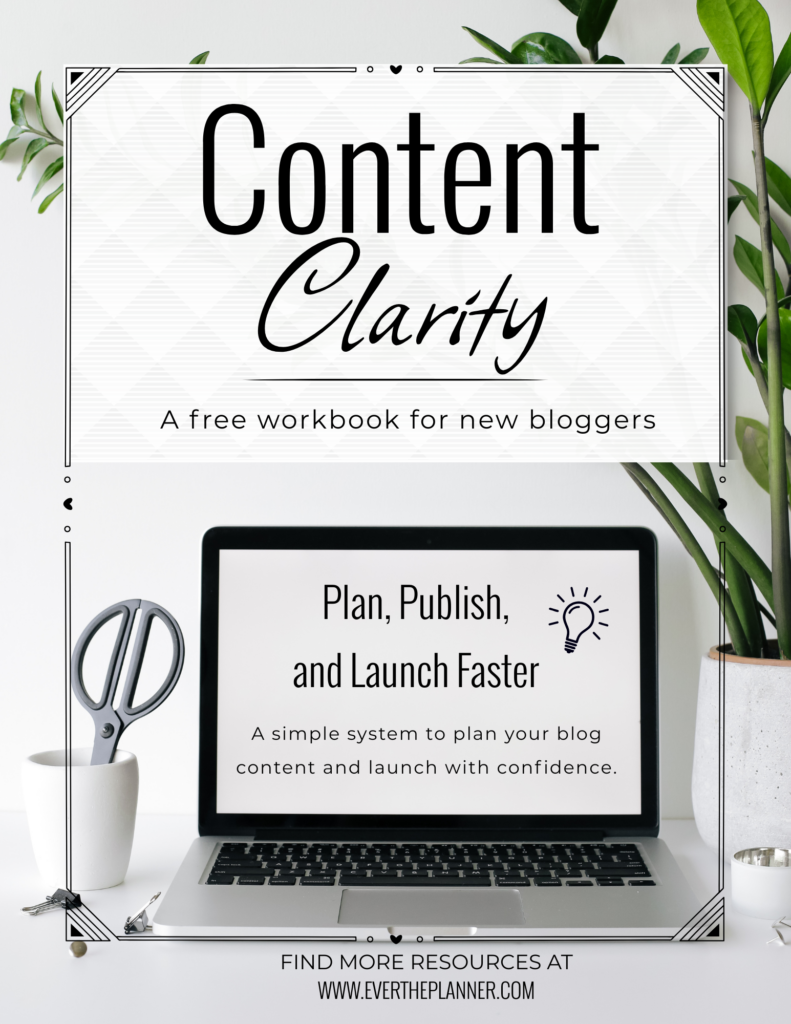
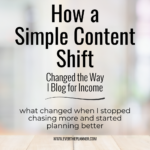
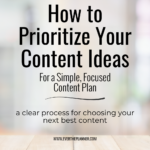
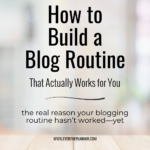
Be the first to comment